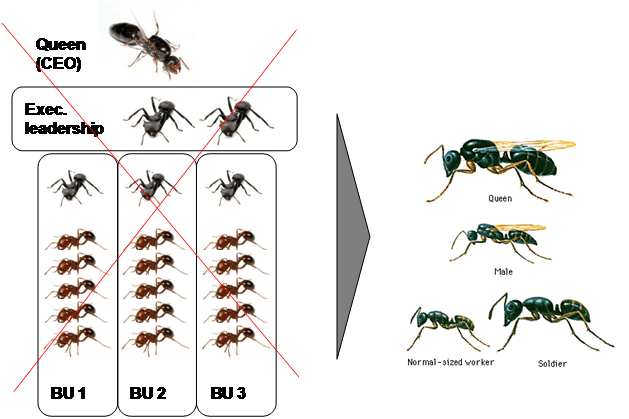
IT rarely loves end users, and for good reason…they constantly invent new problems. They customize their laptops, creating unmanageable software Frankensteins; they bother IT with all kinds of new whims; they want to use all types of new mobile devices, each scarier than the previous one, etc. But the biggest reason of all is that end users always think they know better than IT what tools they need to conduct their business.
But IT can fight these battles with a mighty tool – centralized governance. The less control IT gives end users the better and more stable the system architecture will be, and centralized IT control always produces more efficient results. . Right? Actually, it’s no longer true. While centralized IT governance works well in a traditional IT ecosystem, it quickly fails in the new generation IT environment. The powerful promise of cloud computing is that any user can get easy access to a diverse set of IT resources – not just those available from the internal IT group –for the precise period of time they are needed, and shut them down once the project is completed. But all this requires a new type of governance – decentralized – which allows every user a choice of technology tools and operational flexibility, while still enforcing integrity and consistency of the IT architecture.
Is this even possible? Is there any precedent that shows this can work? There sure is, but not exactly where we would expect to look for it.
Introducing Governance, the Ants Way
Ants solve very complex problems everyday. A few of them include:
- Conducting comprehensive project management of building large anthills capable of accommodating the whole colony
- Running sophisticated logistical optimization exercises of finding food for the whole colony day after day
- Administering a complicated supply chain of anthill maintenance and repair, food storage, and perimeter security per major environment changes (e.g., rain), and constant competition (e.g., other ants)
- Managing HR – or rather AR, (Ant Resources) – of ~40,000 ants
What’s most striking is that they do all this under conditions of completely decentralized governance!

In fact, every ant has total operational flexibility to select its own tools, make optimization decisions, and manage its own work. The only guidelines they follow are their direct job responsibilities (e.g., worker, soldier, queen) and the overall goal of the colony.
This type of decentralized governance is what IT today must adopt and embrace to successfully manage cloud-based IT delivery. Business users will need to make IT decisions every day, and there is no way they can run every one of these decisions through IT for architectural approval, procurement for buying authorization, finance for budgeting, etc.
New flexible guidelines must be designed to support end users’ IT decision making. IT will still need to maintain the overall architecture, but it should not, for example, dictate to the end user exactly which server build and OS stack needs to run the user’s email. Procurement will still negotiate deals with cloud providers, but it should not micromanage every end user’s buying decision as long as the decisions comply with the overall goals. And finance will still set the budgets for business units and business users, but it should step away and let users select their own tools within the budget guidelines. Indeed, the enterprise will operate just like a colony of humans, with every worker optimizing his or her IT decisions within the overall company guidelines. Yes, to attain the full benefits of flexibility and agility of the cloud, enterprises need to learn to govern it the ants’ way.
This approach is certainly not without its challenges. While ant colonies have no issues with guidelines enforcement as ants are “compliance hard wired,” we certainly can’t say the same about human IT end users. Hence, IT’s issue will be how to enforce policies while still enabling users to enjoy the benefits of the cloud model. This is a non-trivial challenge for which there are no easy answers…yet.




